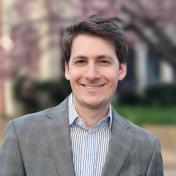Urban Science
- Image

- Image

- Image

- Image

- Image

- Image

We integrate data analysis, visualization, sensors, and artificial intelligence into a planning, design, and policy-making context to answer urgent challenges such as the climate crisis, digital citizenship, sustainable urban development, and building a just city.
Overview
In the years to come, solutions to the complex global problems, which are increasingly urban, will require an understanding of large amounts of data and a facility with analysis, visualization, sensors, and even the integration of artificial intelligence into planning and policy-making contexts in a democratic and ethical manner. At the same time, the fields of computer science and machine learning can benefit from the urgency and “hands-on” nature of the sorts of challenges presented in policy-making and urban planning contexts and can lead to democratic and ethical innovations of technology. In short: urban planners have excellent problems, and computer scientists have excellent tools.
People
Rounaq Basu
 Postdoctoral Associate
Postdoctoral AssociateEran Ben-Joseph
 Professor of Landscape Architecture and Urban Planning
Professor of Landscape Architecture and Urban PlanningCong Cong
 Lecturer of Urban Science and Planning
Lecturer of Urban Science and PlanningKarilyn Crockett
 Assistant Professor of Urban History, Public Policy & Planning
Assistant Professor of Urban History, Public Policy & PlanningCatherine D'Ignazio
 Associate Professor of Urban Science and Planning
Associate Professor of Urban Science and PlanningFabio Duarte
 Lecturer of Technology and Urban Planning
Lecturer of Technology and Urban PlanningYichun Fan
 Doctoral Candidate
Doctoral CandidateJoseph Ferreira
 Professor, Post-Tenure
Professor, Post-TenureDavid Hsu
 Associate Professor of Urban and Environmental Planning
Associate Professor of Urban and Environmental PlanningEric Robsky Huntley
 Lecturer in Urban Science and Planning
Lecturer in Urban Science and PlanningCarmelo Ignaccolo
 Doctoral Candidate
Doctoral CandidateArianna Salazar Miranda
 Doctoral Candidate
Doctoral CandidateBenjamin Preis
 Doctoral Candidate
Doctoral CandidateAndres Sevtsuk
 Associate Professor of Urban Science and Planning
Associate Professor of Urban Science and PlanningWonyoung So
 Doctoral Candidate
Doctoral CandidateAnne Whiston Spirn
 Professor of Landscape Architecture and Planning
Professor of Landscape Architecture and PlanningLawrence Susskind
Professor of Urban and Environmental PlanningSarah Williams
 Associate Professor of Technology and Urban Planning
Associate Professor of Technology and Urban PlanningChris Zegras
 Professor of Mobility and Urban Planning, Department Head
Professor of Mobility and Urban Planning, Department HeadJinhua Zhao
 Associate Professor of Transportation and City Planning
Associate Professor of Transportation and City PlanningSiqi Zheng
 Professor of Urban and Real Estate Sustainability
Professor of Urban and Real Estate Sustainability
Areas of Study
Sensing
The explosion of ubiquitous, inter-connected sensing and computing technologies (epitomized by the smartphone, but more generally represented by the so-called IoT) are rapidly changing the way we understand relevant behaviors in the urban environment, supply conditions, environmental conditions, etc. VR/AR also offer promising, simulation-based data collection techniques. Importantly, these new streams of data pose a wide range of privacy and security concerns, which must be carefully processed by experts and the public at large.
Modeling and Simulation
Broadly understood, computing and computing-enabled capabilities are fundamental to operationalizing mathematical models relevant to understanding relations among built environment-human behavior-outcomes (e.g., health and well-being), environmental systems (e.g., pollution concentrations), economic and financial performance (e.g., investment proforma), etc. Big data and, for example, machine learning techniques offer great promise for enhancing related knowledge creation. At the same time, ever-increasing computing power, epitomized by high performance computing, provides new opportunities for simulating system interactions (e.g., in integrated, high-resolution, agent-based microsimulation tools) to assist in decision-making.
Visualization
Techniques for visualization in urban planning and design include sketching, drawing, renderings, physical models, maps, videos, etc. Computing is changing the richness, complexity, resolution, and interactivity of visualization and the possibilities for communicating planning concepts. This opens up new opportunities to engage across stakeholder audiences, with new means for instantly and intuitively demonstrating planning impacts and co-creating planning interventions.
Control and Optimization
New and richer sources of real-time data, combined with computing and communication technologies will tighten the urban feedback loop. Scalable, robust, and efficient ways to intervene across the urban landscape can help to better match supply and demand (for mobility, building occupancy, energy networks, etc.), increase safety and security, manage disruptions and emergencies, enhance environmental sustainability, etc. Challenges are multiple, however, and include susceptibility to attack (i.e., cyber-physical security) and the need to balance individual and social objectives.
Key Themes
Mobility
Intersection of behavioral science and transportation technology; Urban/transportation microsimulation; Scenario discovery for mobility of the future; Integration of autonomous vehicles and public transit; Future of parking data visualization.
Environment
Democratization of the grid; Data analysis and visualization of environmental hazards and social vulnerability; Behavioral responses to pollution and environmental hazards and associated social costs; Environmental sustainability of urban development and the building sector; Climate data and climate action.
Infrastructure and Information Systems (IIS)
Cybersecurity support for cities; Real estate finance and innovation; Smart sewage systems; Connected infrastructure policy and practice; Place-based infrastructure investment and urban vibrancy dynamics.
Health/Wellbeing
Post-disaster housing data analysis; Big data and technology to assess health and happiness outcomes; Integration of urban design and technological measures to increase wellbeing.
Data Action
How do designers and urban planners effectively utilize state-of-the-art computational techniques such as artificial intelligence and machine learning to understand how cities and regions work. How do they incorporate this understanding into their own practice and to implement change in the built environment and communities they work within?
Cybersecurity
The more city agencies and departments expand their use and reliance on information systems and informatics, the more vulnerable they become to cyberattack, including hard-to-trace ransomware attacks by overseas hackers. Cities in the United States, and across the world, are being attacked several thousand times a day. The risks and costs of these attacks are substantial. As a part of a national consortium of university-based cybersecurity clinics, the DUSP-based MIT Cybersecurity Clinic facilitates collaboration between students and faculty around the country -- and around the world -- to work together to protect critical urban infrastructure.











